So this is a bit of a wishlist and a bit of me trying to understand how the SSS shader works. I come with 8 years of Mental Ray under my belt, and just 9 months with VRay, so please understand if I am asking silly questions.
I set up a simple scene with a sphere and rectangle light. The VRay fastsss2 shader was assigned to the sphere, and I started with the skim milk preset. Result below...
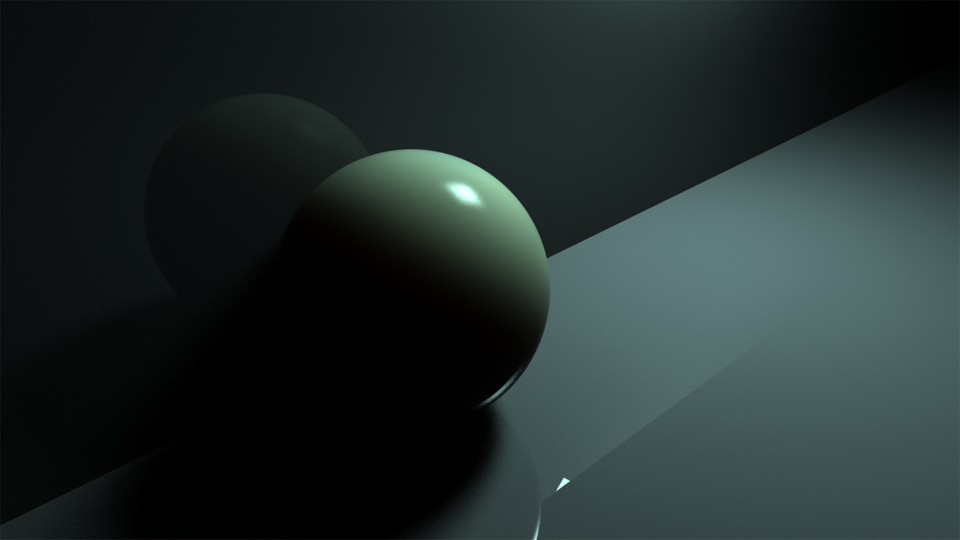
Ok, simple enough. Next thing I did was simply to change the scatter color attribute from the orange preset, to a red. And the render is below. What I find striking and unexpected is that the red is taking over the entire shading, whereas the orange was very subtle before, barely perceptible on the edges. I'm wondering why the shader is behaving this way. See image below with the settings.
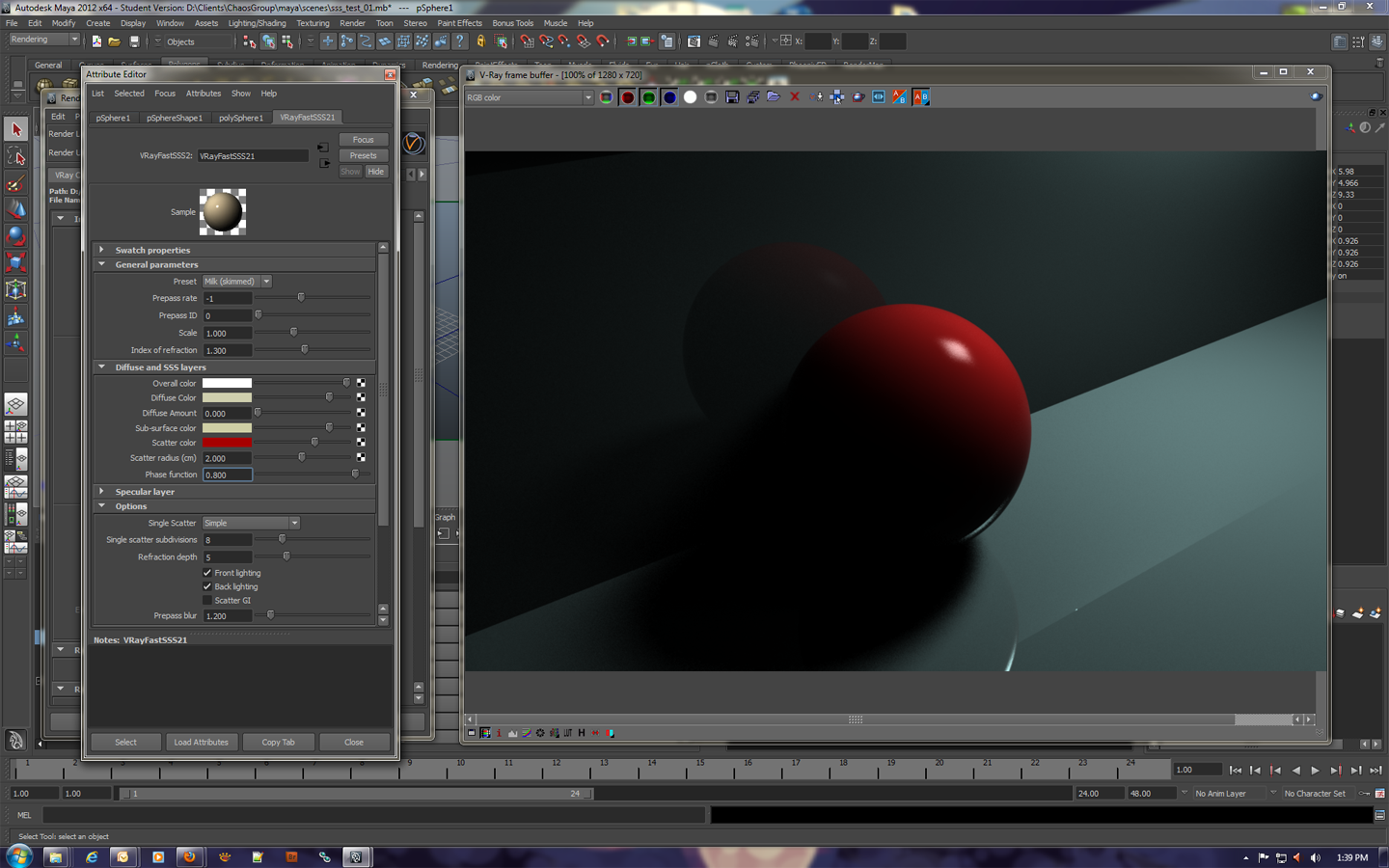
I eventually tweaked the scatter radius to get a balance between what I assume is the forward scattering component (the subsurface color attribute) and the back scattering component (the scatter color), so that the sphere surface that is back lit from the light shows the back scattering, while the portion under direct light has the front scattering. I got this by increasing the scatter radius to 10. I like this behavior where back scattering and front scattering are both intense and separately seen.
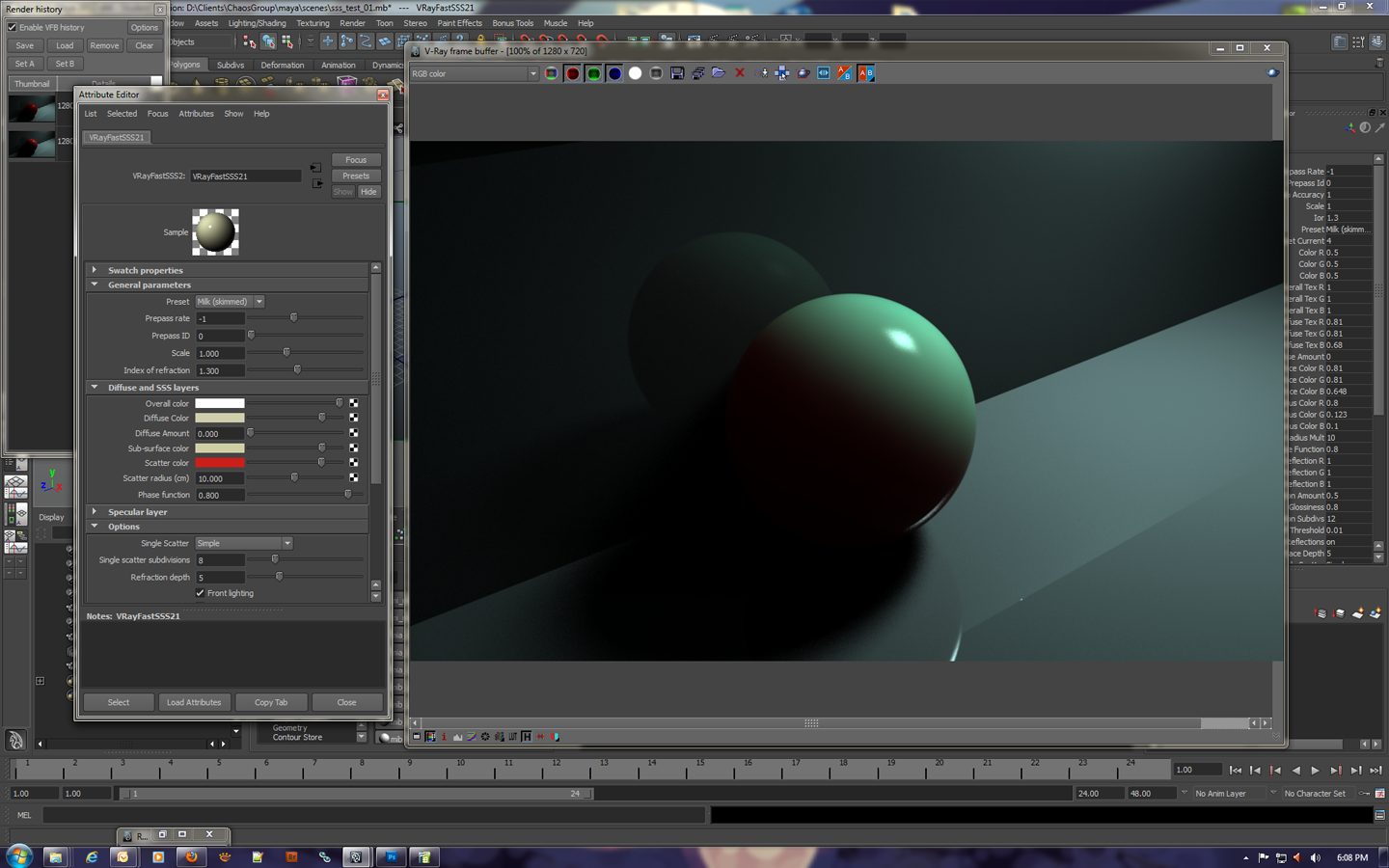
I then decided to bring in a little bit of diffuse value, in the picture below. You will notice that the scattering value has been dimmed overall, which indicates to me that the diffuse component interacts in a substractive way with the sss components. See below. While this might make sense in a 'physical' way, I believe it would be better for look development if it behaved in an additive fashion, so that the values of diffuse, and sss add up in the areas directly exposed to light. Right now, the diffuse intensity seems to be subtracting intensity from the scattering (you see the red back scatter has been dimmed), which makes it harder to build a flexible surface behavior with a bright enough back scatter.
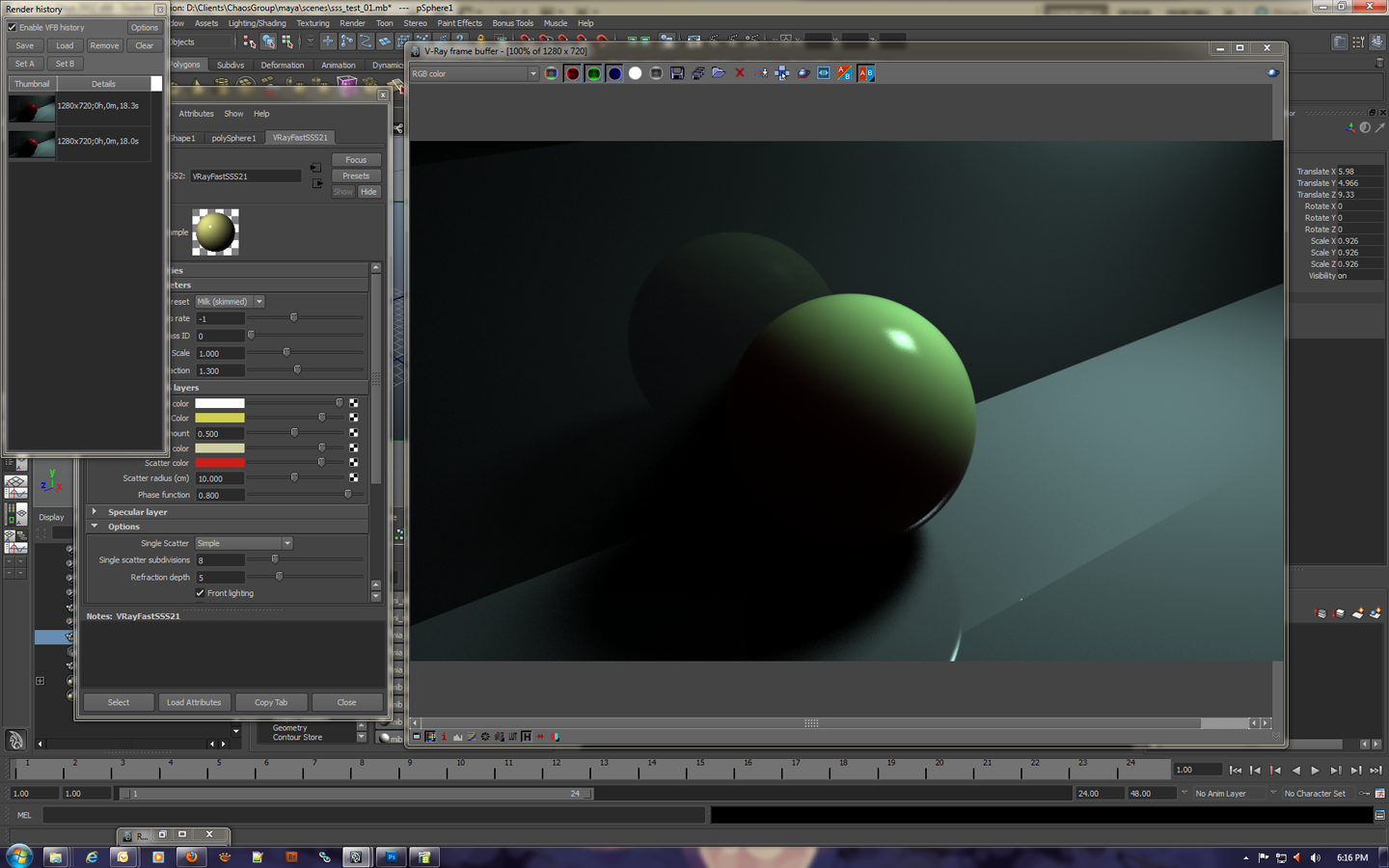
Also, if you happen to turn off the "scatter" attribute, you get a black render. As if the Sub Surface color component didn't matter anymore? See Below. This makes little sense to me. As far as I understand, sub surface scattering has a forward and backward scattering aspect, and here turning one value to zero seems to kill scattering altogether? Could this an implementation that needs to be revisited?
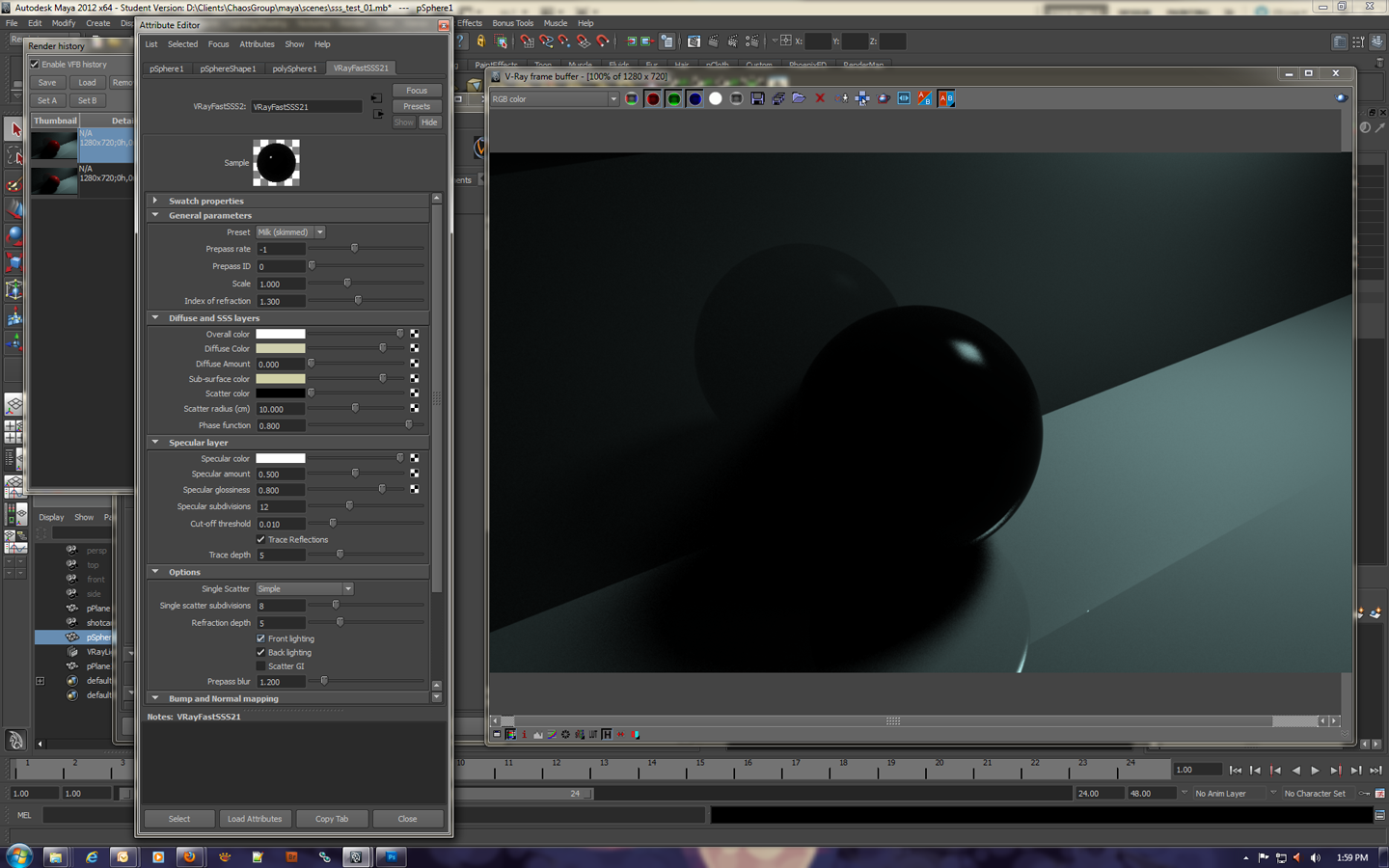
Perhaps it is the habit of using MR, but I want to show how scattering is handled in MR. Below you will see the same scene with MR shaders and lights. I have the shader settings on the left. What I really like about the MR SSS shaders is that you can turn down the contribution of diffuse, forward and back scattering independently, without affecting the other values. This makes the shader model predictable to work with, and great for look development. Because scattering is a behavior that is dependent on scene scale, object and camera positions, etc... It makes it very easy to build a look if you can simply turn off forward scattering, tweak the back scatter, so that you know which component is contributing what reliably.
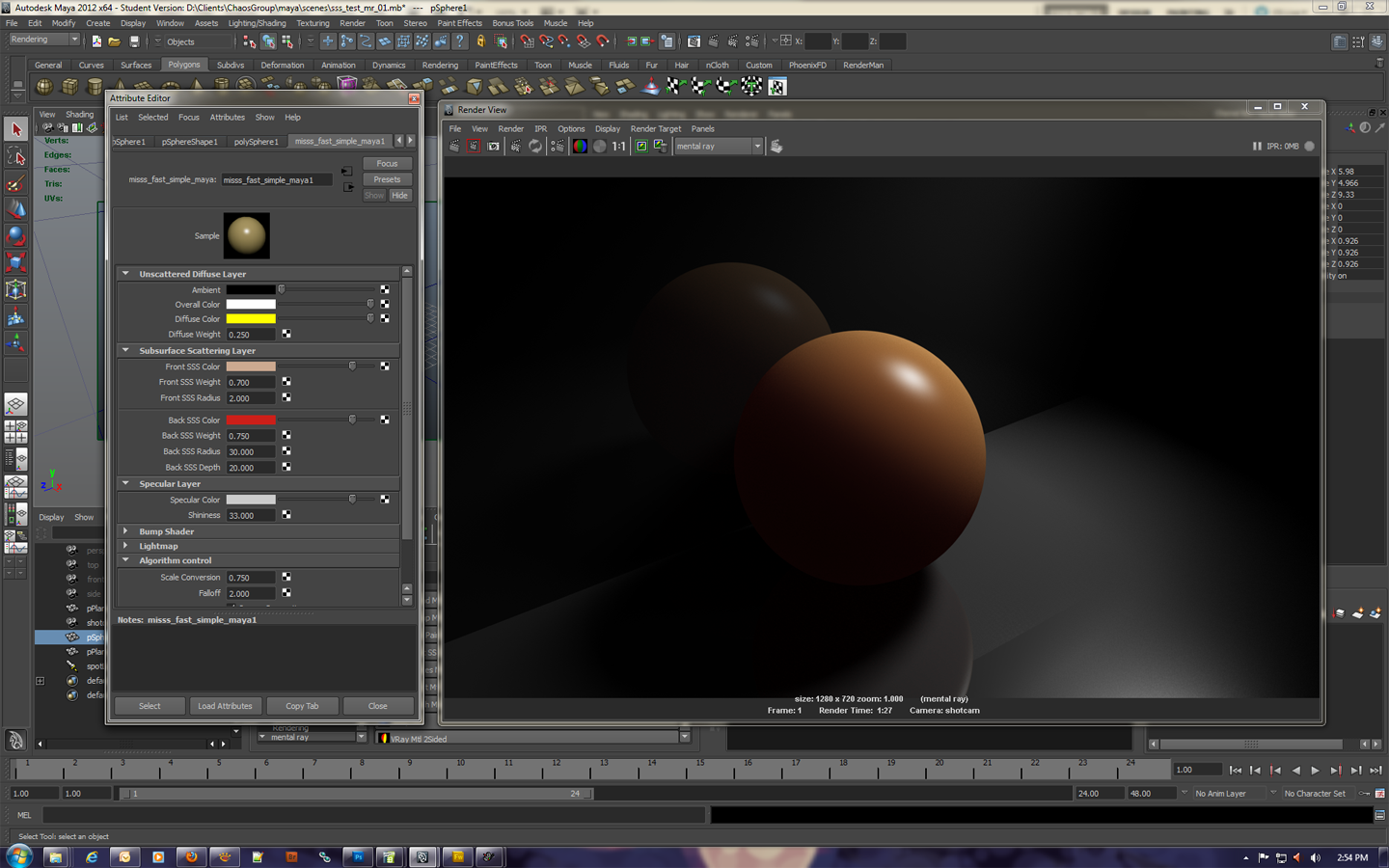
Below are renders with each component (diffuse, front scatter, back scatter) isolated. You will notice that they behave in an additive fashion when all are activated. Sorry for the big images, I wanted to display examples that read well.
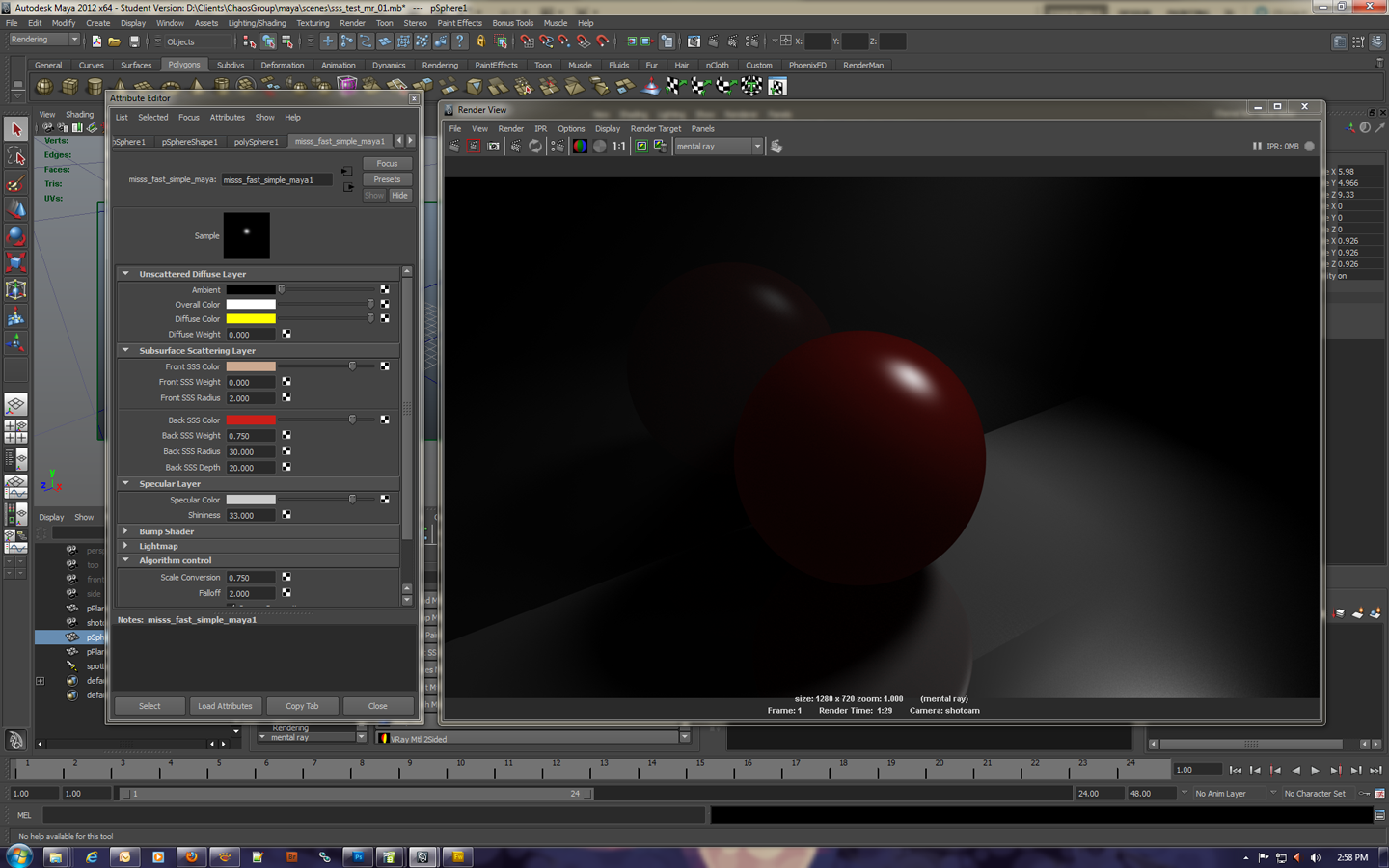
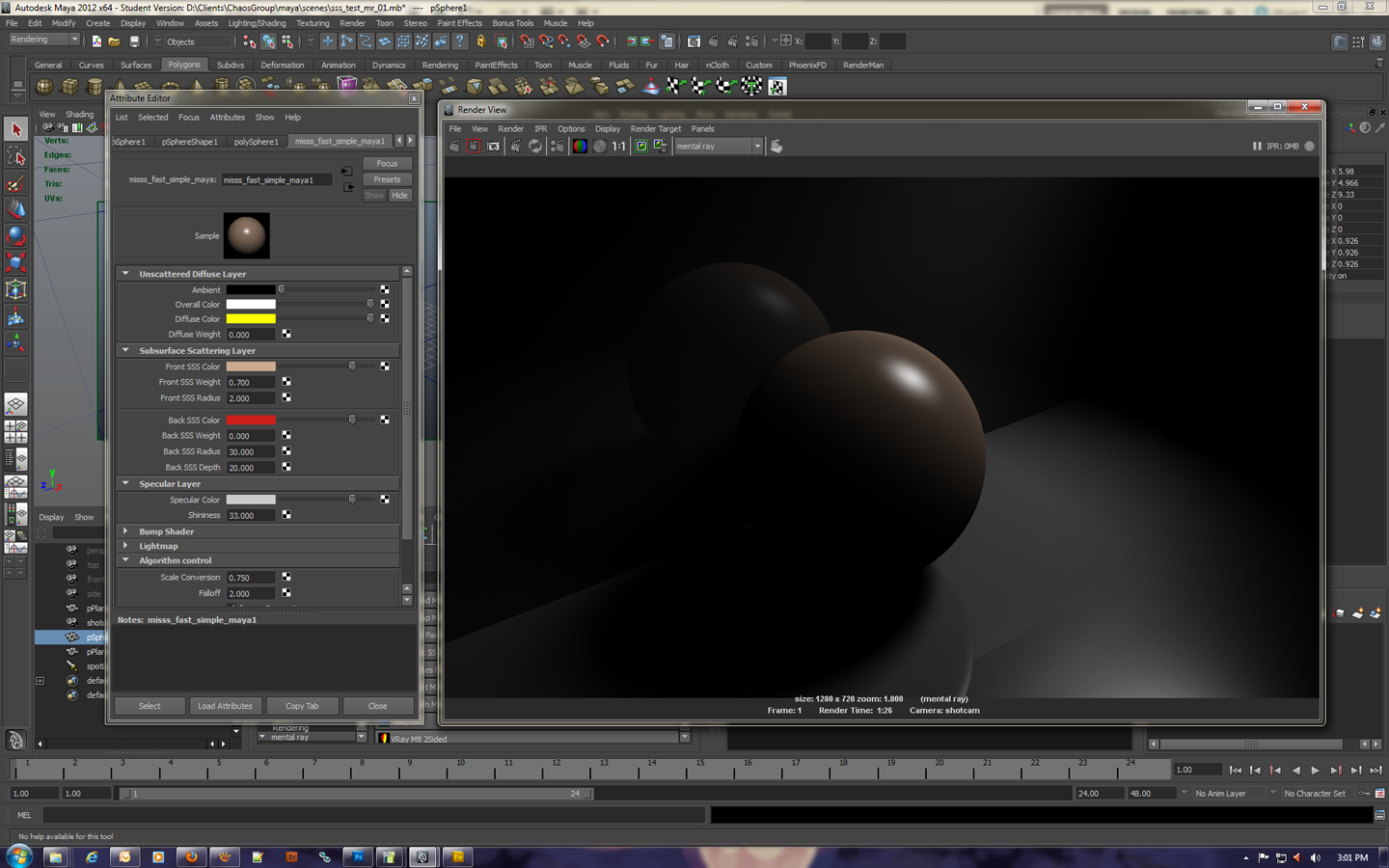
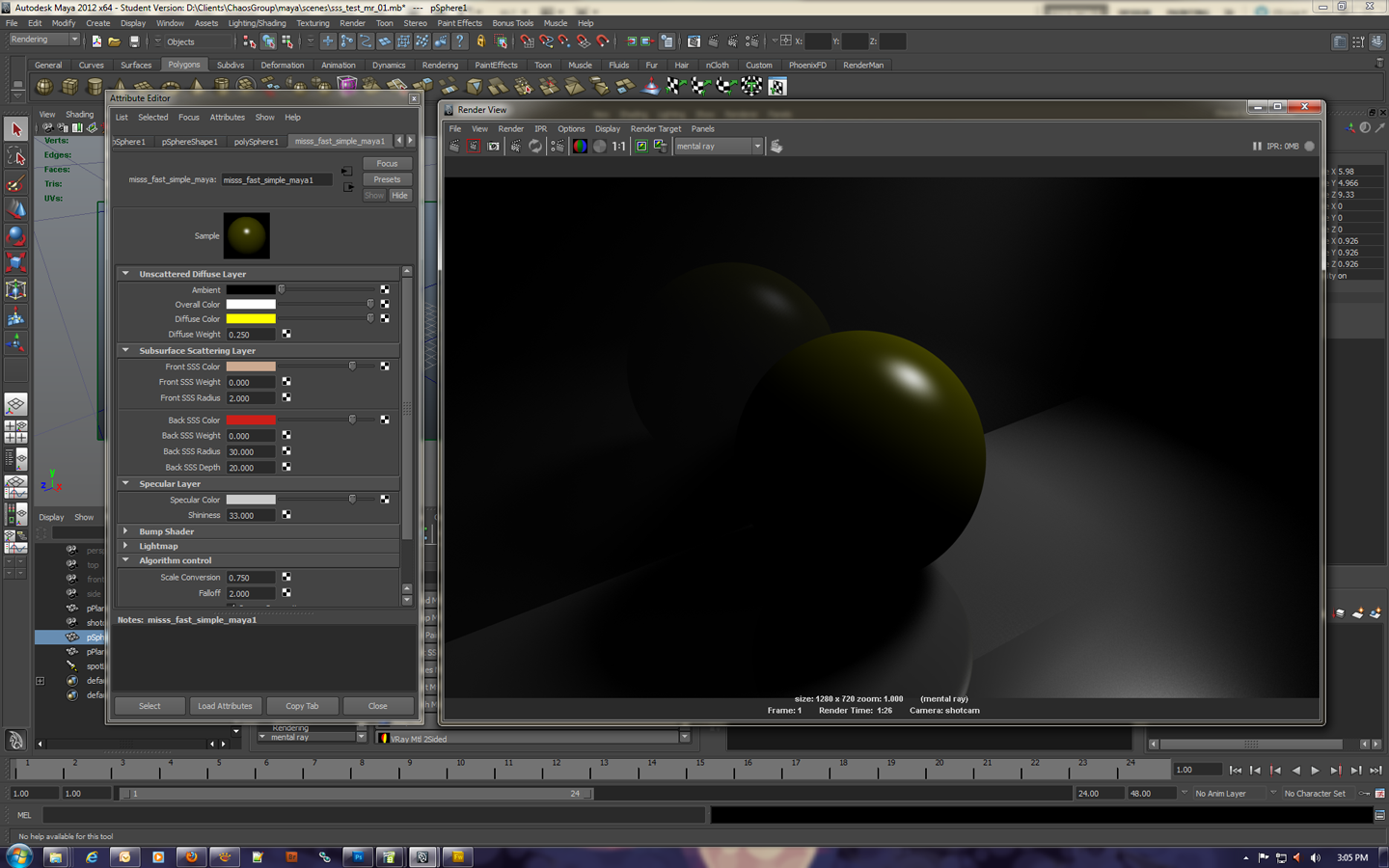
Also, I'd love to see a VRay shader with multiple SSS components that output in separate buffers for compositing. MR's skin shader is based on research on how light scatters in skin, and organic tissue and is very good at making good skin and other organics. Here is the research in question. I encourage people to look at it. And if this isn't an area of interest for development, I'd love to take a stab at writing it. So this isis the second part of my wish list.... The first being having a more flexible SSS implementation. http://graphics.ucsd.edu/papers/egsr...sr2006skin.pdf
I'm including the scenes I used for anyone interested in testing out.scenes.zip
Thank you for your time.
I set up a simple scene with a sphere and rectangle light. The VRay fastsss2 shader was assigned to the sphere, and I started with the skim milk preset. Result below...

Ok, simple enough. Next thing I did was simply to change the scatter color attribute from the orange preset, to a red. And the render is below. What I find striking and unexpected is that the red is taking over the entire shading, whereas the orange was very subtle before, barely perceptible on the edges. I'm wondering why the shader is behaving this way. See image below with the settings.

I eventually tweaked the scatter radius to get a balance between what I assume is the forward scattering component (the subsurface color attribute) and the back scattering component (the scatter color), so that the sphere surface that is back lit from the light shows the back scattering, while the portion under direct light has the front scattering. I got this by increasing the scatter radius to 10. I like this behavior where back scattering and front scattering are both intense and separately seen.

I then decided to bring in a little bit of diffuse value, in the picture below. You will notice that the scattering value has been dimmed overall, which indicates to me that the diffuse component interacts in a substractive way with the sss components. See below. While this might make sense in a 'physical' way, I believe it would be better for look development if it behaved in an additive fashion, so that the values of diffuse, and sss add up in the areas directly exposed to light. Right now, the diffuse intensity seems to be subtracting intensity from the scattering (you see the red back scatter has been dimmed), which makes it harder to build a flexible surface behavior with a bright enough back scatter.

Also, if you happen to turn off the "scatter" attribute, you get a black render. As if the Sub Surface color component didn't matter anymore? See Below. This makes little sense to me. As far as I understand, sub surface scattering has a forward and backward scattering aspect, and here turning one value to zero seems to kill scattering altogether? Could this an implementation that needs to be revisited?

Perhaps it is the habit of using MR, but I want to show how scattering is handled in MR. Below you will see the same scene with MR shaders and lights. I have the shader settings on the left. What I really like about the MR SSS shaders is that you can turn down the contribution of diffuse, forward and back scattering independently, without affecting the other values. This makes the shader model predictable to work with, and great for look development. Because scattering is a behavior that is dependent on scene scale, object and camera positions, etc... It makes it very easy to build a look if you can simply turn off forward scattering, tweak the back scatter, so that you know which component is contributing what reliably.

Below are renders with each component (diffuse, front scatter, back scatter) isolated. You will notice that they behave in an additive fashion when all are activated. Sorry for the big images, I wanted to display examples that read well.



Also, I'd love to see a VRay shader with multiple SSS components that output in separate buffers for compositing. MR's skin shader is based on research on how light scatters in skin, and organic tissue and is very good at making good skin and other organics. Here is the research in question. I encourage people to look at it. And if this isn't an area of interest for development, I'd love to take a stab at writing it. So this isis the second part of my wish list.... The first being having a more flexible SSS implementation. http://graphics.ucsd.edu/papers/egsr...sr2006skin.pdf
I'm including the scenes I used for anyone interested in testing out.scenes.zip
Thank you for your time.
 If you need any help, you can email me to
If you need any help, you can email me to
Comment